
Journal of Computational Electronics
Scope & Guideline
Bridging Disciplines for Enhanced Electronic Innovation
Introduction
Aims and Scopes
- Computational Modeling of Electronic Devices:
The journal extensively covers computational techniques for modeling various electronic devices, including transistors, solar cells, and sensors, utilizing methods like Density Functional Theory (DFT), Monte Carlo simulations, and finite element analysis. - Materials Science and Engineering:
A significant emphasis is placed on the investigation and development of new materials and nanostructures, particularly in the context of semiconductors, 2D materials, and nanocomposites, to enhance the performance of electronic and optoelectronic devices. - Energy Generation and Conversion Technologies:
Research articles frequently focus on photovoltaic technologies, including novel solar cell architectures and materials, addressing challenges in efficiency, stability, and sustainability. - Nanoelectronics and Quantum Devices:
The journal explores the design and simulation of advanced nanoelectronic devices, such as FinFETs, TFETs, and memristors, with attention to quantum effects and scaling challenges. - Electromagnetic and Photonic Devices:
Topics related to the design and analysis of electromagnetic devices, including antennas, waveguides, and plasmonic structures, are well-represented, highlighting their applications in communication and sensing. - Machine Learning Applications in Electronics:
There is a growing interest in integrating machine learning techniques for optimizing device performance, predictive modeling, and enhancing simulation accuracy across various electronic applications.
Trending and Emerging
- Advanced Photovoltaic Technologies:
Emerging studies focus on the development of next-generation photovoltaic materials and architectures, such as perovskite solar cells, tandem structures, and organic-inorganic hybrids, showcasing significant advancements in efficiency and stability. - Integration of Machine Learning with Device Design:
The incorporation of machine learning techniques for optimizing device performance and predictive modeling is gaining traction, reflecting a broader trend towards data-driven approaches in electronics research. - Novel Nanostructured Materials:
Research on nanostructured materials, including quantum dots, 2D materials, and hybrid structures, is trending, driven by their unique electronic and optical properties that enhance device performance. - Energy-Efficient and Sustainable Technologies:
There is an increasing focus on energy-efficient technologies, including low-power devices and sustainable materials for solar energy applications, aligning with global sustainability goals. - Quantum Computing and Spintronics:
Emerging themes in quantum computing and spintronics are gaining attention, as researchers explore novel devices that leverage quantum effects and spin-based phenomena for enhanced performance.
Declining or Waning
- Traditional Semiconductor Devices:
Research focusing solely on conventional semiconductor devices without incorporating novel materials or advanced computational techniques seems to be decreasing, as the field shifts towards more innovative approaches. - Basic Theoretical Studies Without Practical Applications:
There's a noticeable decline in purely theoretical studies that do not demonstrate practical applicability or experimental validation, as the journal increasingly favors research with tangible impacts or advancements in technology. - Low-Impact Photovoltaic Technologies:
Studies centered on older photovoltaic technologies or materials that do not show significant efficiency improvements or novel approaches are becoming less common, as the focus shifts to cutting-edge materials and techniques. - Underexplored 2D Materials:
Research on lesser-known or underexplored 2D materials has waned, as the field concentrates more on well-characterized materials like graphene and transition metal dichalcogenides that demonstrate higher potential for applications.
Similar Journals
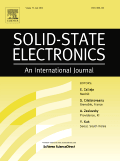
SOLID-STATE ELECTRONICS
Unlocking the Potential of Materials ScienceSOLID-STATE ELECTRONICS, published by Pergamon-Elsevier Science Ltd, is a highly regarded journal committed to advancing the field of solid-state physics and its applications. With an ISSN of 0038-1101 and an E-ISSN of 1879-2405, this journal has been a cornerstone of scholarly communication since its inception in 1960. Covering a rich spectrum of topics, it features in the Q3 category for Condensed Matter Physics, Electrical and Electronic Engineering, and Materials Science, reflecting its robust engagement in these critical fields. Despite not being an open-access journal, it provides valuable insights and research findings accessible to both academia and industry professionals, ensuring the dissemination of cutting-edge knowledge. With a strong focus on empirical research and theoretical developments, SOLID-STATE ELECTRONICS aims to bridge the gap between fundamental science and practical application, making it an essential resource for researchers, professionals, and students alike in the United Kingdom and beyond.

Journal of Nanophotonics
Transforming Ideas into Nanophotonic RealitiesThe Journal of Nanophotonics, published by SPIE-SOC Photo-Optical Instrumentation Engineers, is an esteemed platform dedicated to advancing the field of nanotechnology through pioneering research in photonics. Since its inception in 2007, this journal has become instrumental in disseminating innovative findings and fostering collaborative discussions, especially in the domains of Condensed Matter Physics, Electronic, Optical and Magnetic Materials, and Nanoscience and Nanotechnology. Currently ranked within the Q3 category across these fields, it serves as a vital resource for academics, industry professionals, and students keen on exploring the multifaceted applications and implications of nanophotonic technologies. With its convergence set to continue until 2024, the journal offers a non-open-access model, ensuring rigorous peer-review standards and high-quality publications that contribute to the global body of knowledge.
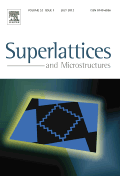
SUPERLATTICES AND MICROSTRUCTURES
Fostering collaboration in the realm of electrical engineering.SUPERLATTICES AND MICROSTRUCTURES is a premier journal dedicated to the exploration and dissemination of cutting-edge research in the fields of Condensed Matter Physics, Electrical and Electronic Engineering, and Materials Science. Published by Academic Press Ltd - Elsevier Science Ltd, this journal has established itself as an important platform for scholars and industry professionals to share their findings related to the design, fabrication, and application of superlattices and microstructured materials. With a commendable impact factor reflected in its rankings—positioned within the top quartile in Physics and Astronomy as well as Electrical and Electronic Engineering—it offers high visibility and influence in the academic community. The journal has covered significant contributions from 1985 to 2022, although access options have transitioned, making staying current essential for researchers and practitioners alike. This journal not only serves as a repository of knowledge but also fosters collaboration and innovation in materials science and related disciplines.
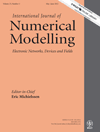
INTERNATIONAL JOURNAL OF NUMERICAL MODELLING-ELECTRONIC NETWORKS DEVICES AND FIELDS
Transforming challenges into solutions through simulation.International Journal of Numerical Modelling: Electronic Networks Devices and Fields, published by Wiley, is a prestigious journal dedicated to advancing the field of numerical modeling across electronic networks, devices, and fields. Since its inception in 1988, the journal has established itself as a critical resource for researchers, professionals, and students alike, contributing significantly to the domains of computer science applications, electrical and electronic engineering, as well as modeling and simulation. With a strong focus on innovative methodologies and cutting-edge applications, the journal is ranked within the Q2 and Q3 quartiles across various categories, reflecting its influence and recognition in the academic community. The journal is indexed in Scopus, holding notable ranks such as 86th in Modeling and Simulation and 290th in Electrical and Electronic Engineering, placing it within the top quartiles relevant to its fields. Although not fully open access, its high-quality content serves as an essential reference point for ongoing research and development. Researchers can explore a wealth of articles that tackle current challenges and advancements in numerical modeling, positioning themselves at the forefront of their disciplines.

JAPANESE JOURNAL OF APPLIED PHYSICS
Empowering Discoveries in Applied SciencesThe Japanese Journal of Applied Physics is a premier publication in the field of applied physics, offering a platform for researchers and professionals to present their findings and innovations. Published by IOP Publishing Ltd, this esteemed journal has been active since 1963 and continues to contribute significantly to the understanding and advancement of applied physics across diverse applications. The journal is recognized for its rigorous peer-review process and high-quality publications, evidenced by its 2023 ranking of Q2 in Engineering (Miscellaneous) and Q3 in Physics and Astronomy (Miscellaneous). With an accessible ISSN of 0021-4922 and E-ISSN 1347-4065, the journal cultivates a global readership, fostering collaboration and innovation within the scientific community. Although the journal does not currently offer open access options, its valuable insights into the latest technological advancements and theoretical developments remain crucial for students, researchers, and industry professionals alike. By bridging the gap between fundamental physics and practical applications, the Japanese Journal of Applied Physics plays a vital role in shaping the future of applied sciences in Japan and beyond.
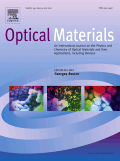
OPTICAL MATERIALS
Transforming Ideas into Optical SolutionsOPTICAL MATERIALS is a peer-reviewed journal published by Elsevier, focusing on the intricate field of optical materials within various scientific domains including atomic and molecular physics, electronic engineering, and chemistry. With an impact factor indicative of its relevance, it ranks in the Q2 category across multiple areas such as Electrical and Electronic Engineering, and Inorganic Chemistry, highlighting its critical position in advancing research and innovation. Established in 1992 and continuing its contribution until 2024, this journal serves as a vital resource for researchers and professionals aiming to disseminate significant findings in material sciences, particularly those related to optical properties and applications. While it does not offer open access, the journal remains essential for academia and industry alike, ensuring the continued exchange of valuable knowledge in this rapidly evolving field.

Advanced Electronic Materials
Exploring the Future of Material InnovationAdvanced Electronic Materials is an esteemed journal published by Wiley, dedicated to the forefront of materials science, particularly in the areas of electronic, optical, and magnetic materials. With a commendable impact factor that places it in the Q1 quartile of its category and a Scopus rank of 36 out of 284, the journal is a vital resource for researchers, professionals, and students aiming to contribute to this rapidly evolving field. Launched in 2015 and fully transitioned to Open Access in 2023, the journal promotes widespread dissemination of knowledge, ensuring accessibility to groundbreaking research findings. With its address located in Germany at 111 River St, Hoboken 07030-5774, NJ, it serves a global academic community eager to explore innovative materials technologies that influence diverse applications ranging from consumer electronics to advanced manufacturing. As researchers seek to push the boundaries of what is possible with materials, Advanced Electronic Materials stands as a premier platform for sharing, discovering, and advancing knowledge in this essential domain.

ACS Applied Electronic Materials
Innovating Technologies Through Cutting-edge ResearchACS Applied Electronic Materials, published by the American Chemical Society, is a prominent journal in the field of applied materials science, with a particular focus on electronic, optical, and magnetic materials. Established in 2019, this journal has quickly risen to prominence, achieving a 2023 ranking of Q1 in both Electronic, Optical and Magnetic Materials and Materials Chemistry, as well as Q2 in Electrochemistry, reflective of its high-quality contributions and significant impact within the scholarly community. With an impressive Scopus rank of #22 in Electrochemistry, #59 in Electronic, Optical and Magnetic Materials, and #75 in Materials Chemistry, ACS Applied Electronic Materials serves as an essential resource for researchers, professionals, and students seeking to explore innovative advancements in the field. While the journal is not open access, it offers robust subscription options and aims to foster the dissemination of cutting-edge research articles, reviews, and technical notes that contribute to the understanding and application of electronic materials in various technological contexts. As a platform for pioneering research and cross-disciplinary dialogue, this journal is indispensable for anyone invested in the future of materials science.
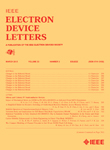
IEEE ELECTRON DEVICE LETTERS
Elevating Knowledge in Electronic MaterialsIEEE Electronics Device Letters, published by the esteemed IEEE-Institute of Electrical and Electronics Engineers Inc, stands at the forefront of innovation in the field of electrical and electronic engineering. With a rich history spanning from 1980 to 2024, this journal showcases groundbreaking research and letters that significantly contribute to the advancement of electronic, optical, and magnetic materials. Its impressive Q1 rankings in both Electrical and Electronic Engineering and Electronic, Optical, and Magnetic Materials underscore its pivotal role in shaping contemporary academic discourse. The journal maintains a strong position in Scopus rankings, positioned within the top 16% for Electrical and Electronic Engineering and the top 18% for Materials Science, making it a vital resource for researchers, professionals, and students alike. With the absence of open access, it maintains an exclusive repository of high-impact research that experts in the field turn to for the latest insights and developments. IEEE Electronics Device Letters is committed to providing a platform for the dissemination of transformative knowledge that fuels innovation and progress in the ever-evolving landscape of electronics.

International Journal of Nano Dimension
Unveiling the potential of nanomaterials in science and engineering.The International Journal of Nano Dimension is a premier publication dedicated to advancing the field of nanotechnology and its applications across various disciplines, published by the Islamic Azad University, Tonekabon Branch. With an ISSN of 2008-8868 and an E-ISSN of 2228-5059, this journal serves as a vital platform for researchers, professionals, and students seeking to disseminate and access cutting-edge findings in nano materials and their integration into science and engineering. The journal has gained notable recognition in Scopus rankings, especially within the fields of Materials Science and Chemical Engineering, emphasizing its commitment to high-quality research. Spanning the years from 2019 to 2024, the journal emphasizes open access to foster knowledge sharing in the scientific community. As nanotechnology continues to revolutionize industries, the International Journal of Nano Dimension plays an essential role in showcasing transformative research that addresses the challenges and opportunities of this dynamic field.